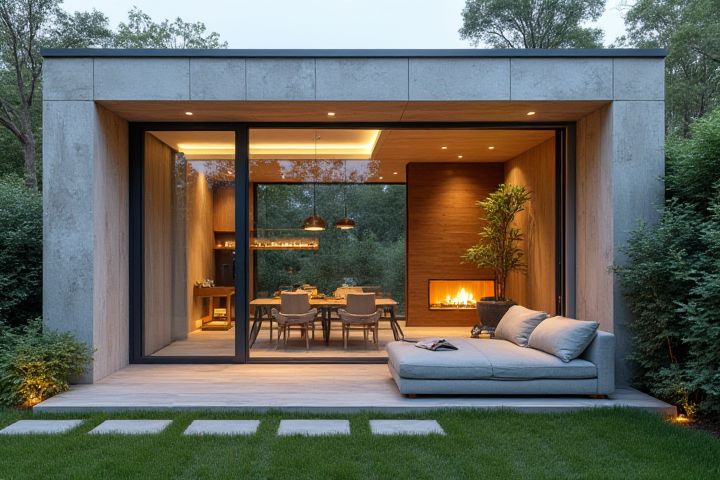
To cool your house naturally, start by maximizing airflow by strategically opening windows during cooler times, like early morning or late evening. Install fans to facilitate cross-ventilation, helping to circulate air throughout your living space. Use insulated curtains or shades to block direct sunlight during the hottest parts of the day, which can significantly lower indoor temperatures. Planting trees or installing shade structures can also provide natural shade, further reducing heat inside your home. Finally, consider utilizing cooling techniques such as placing bowls of ice in front of fans to enhance the cooling effect in your rooms.
How To Cool A House Naturally
Cross-ventilation
Cross-ventilation is an effective technique for naturally cooling your house by promoting airflow between open windows on opposite sides. To optimize this method, you should strategically position your windows to create a path for breeze, ideally aligning them with prevailing winds. Utilizing ceiling fans can help circulate the cool air throughout your living spaces, enhancing comfort levels without relying heavily on air conditioning. To further improve airflow, consider using lightweight, heat-reflecting curtains during the day while keeping windows open to facilitate continuous ventilation.
Shading devices
Utilizing shading devices is an effective way to naturally cool your house, enhancing comfort while reducing energy costs. Strategically placed awnings, pergolas, or outdoor shades can block direct sunlight from windows, preventing overheating during hot months. Incorporating trees or tall shrubs can create natural shade, allowing your home to stay cooler while also improving air quality. If you opt for interior solutions, sheer curtains or reflective blinds can diffuse sunlight and minimize heat buildup, helping maintain a pleasant indoor environment.
Insulation
Proper insulation is essential for maintaining a cool home during hot weather, as it minimizes heat transfer and keeps indoor spaces comfortable. Insulating your attic can reduce heat buildup; studies show that well-insulated attics can lower indoor temperatures by 10 to 15 degrees Fahrenheit. Wall insulation, using materials like cellulose or spray foam, can further prevent heat from entering, enhancing energy efficiency. Additionally, consider adding reflective barriers, as they can reflect up to 97% of radiant heat, effectively keeping your house cooler.
Light-colored roofing
Light-colored roofing can significantly reduce your home's temperature by reflecting sunlight rather than absorbing it. Studies show that a light roof can keep your attic up to 30 degrees cooler than a dark roof, which contributes to lower energy costs associated with air conditioning. By implementing a light-colored roofing system, you can lower your energy consumption by up to 20%. This eco-friendly solution not only enhances your home's efficiency but also extends the lifespan of your roofing materials by minimizing heat-induced wear.
Plant trees strategically
Strategically planting trees around your home can significantly lower indoor temperatures by providing shade and reducing direct sunlight. Deciduous trees, such as oaks and maples, are particularly effective in summer, as their leafy canopy blocks sunlight, while in winter, they shed leaves to allow sunlight to warm your home. Evergreen trees, like pines and spruces, can act as windbreaks, reducing cold drafts in winter and maintaining a cooler environment in summer. By positioning these trees on the east and west sides of your property, you can optimize shading throughout the day, enhancing your home's natural cooling system.
Use reflective window films
Reflective window films can significantly lower indoor temperatures by minimizing solar heat gain. These films, typically made from polyester or metalized materials, can reject up to 80% of the sun's heat while allowing natural light to enter, thereby enhancing comfort without compromising brightness. Installing these films on windows can lead to a reduction in air conditioning costs by as much as 30%, making them an energy-efficient upgrade. You can also expect increased privacy and UV protection for your furnishings, ensuring a cooler and more sustainable living environment.
Opt for breathable fabrics
Opting for breathable fabrics in your home can significantly enhance indoor cooling. Natural materials such as cotton, linen, and bamboo allow for better air circulation, helping to regulate temperature during hot months. When choosing curtains, bedding, or upholstery, selecting lighter colors can also reflect sunlight rather than absorb it, fostering a more comfortable atmosphere. By incorporating these fabrics, you create a naturally cooler environment, reducing the need for excessive air conditioning.
Use thermal mass
Using thermal mass to cool your house naturally involves incorporating materials with high heat capacity, such as concrete, brick, or stone, which can absorb and store heat during hot days. Positioning these materials strategically, such as in walls or flooring that receive direct sunlight, allows them to moderate indoor temperatures, absorbing excess heat during the day and releasing it during cooler nights. Implementing this method can lead to a temperature drop of up to 10degF in interior spaces, promoting a more comfortable environment without relying on air conditioning. You can enhance this effect by ensuring adequate ventilation, allowing cooler air to circulate and replace the warm air naturally stored in your thermal mass.
Nighttime ventilation
To effectively cool your house naturally, consider utilizing nighttime ventilation, a method that harnesses cooler evening air. Open windows strategically to promote cross-ventilation, allowing fresh air to flow through your living spaces while hot air escapes. Installing window fans can further enhance air circulation, drawing in cooler air from outside at night. Ensure your windows are covered with shades or curtains during the day to trap cooler air indoors and keep out direct sunlight.
Minimize heat-generating activities
Minimizing heat-generating activities can significantly enhance your home's cooling efficiency. For instance, using energy-efficient appliances during cooler evening hours can reduce indoor heat accumulation; electric stoves create more heat than microwaves, making the latter a better choice. Shifting laundry days to cooler times of the week and air-drying clothes instead of using a dryer can lower indoor temperatures. Furthermore, opting for LED lighting over incandescent bulbs can decrease lighting-related heat by up to 80%, creating a much more comfortable living environment.
